In recent years, the culinary world has witnessed a remarkable shift with the rise of smokeless grills. This innovative cooking method has not only changed the way we prepare our favorite outdoor dishes but has also sparked a new wave of culinary exploration. As these grills continue to gain popularity, their impact on traditional barbecue and outdoor cooking is undeniable, and the future outlook is as promising as it is intriguing. Let’s delve into the stories of those who have embraced this smokeless revolution and the experiences that have shaped their cooking culture.
The Rise of Smokeless Grills in the European and American Markets
The European and American markets have witnessed a remarkable surge in the popularity of smokeless grills. Once a niche product, these innovative cooking devices have now become a staple in many homes, offering a healthier and more convenient way to enjoy outdoor cooking. Let’s delve into the factors that have contributed to this rise.
As health consciousness continues to grow, consumers are increasingly seeking cooking methods that minimize smoke and the associated health risks. Smokeless grills have stepped into this void, providing an alternative that not only reduces smoke but also allows for a broader range of ingredients to be cooked with ease.
Modern lifestyles demand convenience, and smokeless grills have risen to meet this need. With features like quick heat-up times and easy cleaning, these grills are perfect for busy households or individuals who want to enjoy a quick meal without the hassle of traditional grilling.
Technology has played a pivotal role in the popularity of smokeless grills. Advances in heat distribution and ventilation systems have made it possible to cook a variety of foods with precision, ensuring that every meal is cooked to perfection without the telltale smoke.
The European market, known for its appreciation of quality and health, has warmly embraced smokeless grills. Countries like Germany, Italy, and the UK have seen a significant increase in sales, with consumers drawn to the idea of reducing environmental impact and enjoying delicious meals with minimal effort.
In the United States, the trend towards smokeless grilling has been fueled by a combination of health concerns and the growing demand for low-carb and high-protein diets. As more people look for ways to enjoy grilled foods without the smoke, smokeless grills have become a go-to option.
One of the standout features of smokeless grills is their versatility. Whether you’re cooking vegetables, meats, or seafood, these grills offer a wide array of cooking modes that cater to different tastes and preferences. This has opened up new possibilities for outdoor cooking enthusiasts, who can now experiment with a wider range of recipes.
The adoption of smokeless grills has also been influenced by the rise of social media and influencer culture. As more people share their cooking experiences and the benefits of smokeless grills, the demand for these products has surged. Word-of-mouth referrals and online reviews have played a crucial role in the product’s rapid spread.
Brands have not been slow to capitalize on this trend. Major players in the grill industry have introduced their versions of smokeless grills, each boasting unique features and innovations. From compact countertop models to large outdoor grills, the variety available has made smokeless grilling accessible to a wide audience.
Environmental concerns have also contributed to the rise of smokeless grills. As more people become aware of the impact of smoke on air quality and the environment, the appeal of a smokeless alternative becomes even more compelling. This has led to a growing segment of eco-conscious consumers who are eager to reduce their carbon footprint.
Despite the growing popularity, challenges remain. One of the most significant hurdles is educating consumers about the benefits of smokeless grills. Many people are still unfamiliar with the technology and its advantages, which can be a barrier to wider adoption.
Another challenge is the perception of taste. Some traditionalists argue that food cooked without smoke lacks flavor. However, advancements in smokeless grill technology have made it possible to achieve rich, smoky flavors without the smoke, thus addressing this concern.
Looking ahead, the future of smokeless grills in the European and American markets looks bright. As technology continues to evolve, we can expect to see even more sophisticated models that offer unparalleled convenience and performance. The smokeless grill’s rise is a testament to the industry’s ability to adapt to consumer needs and preferences, and its journey is far from over.
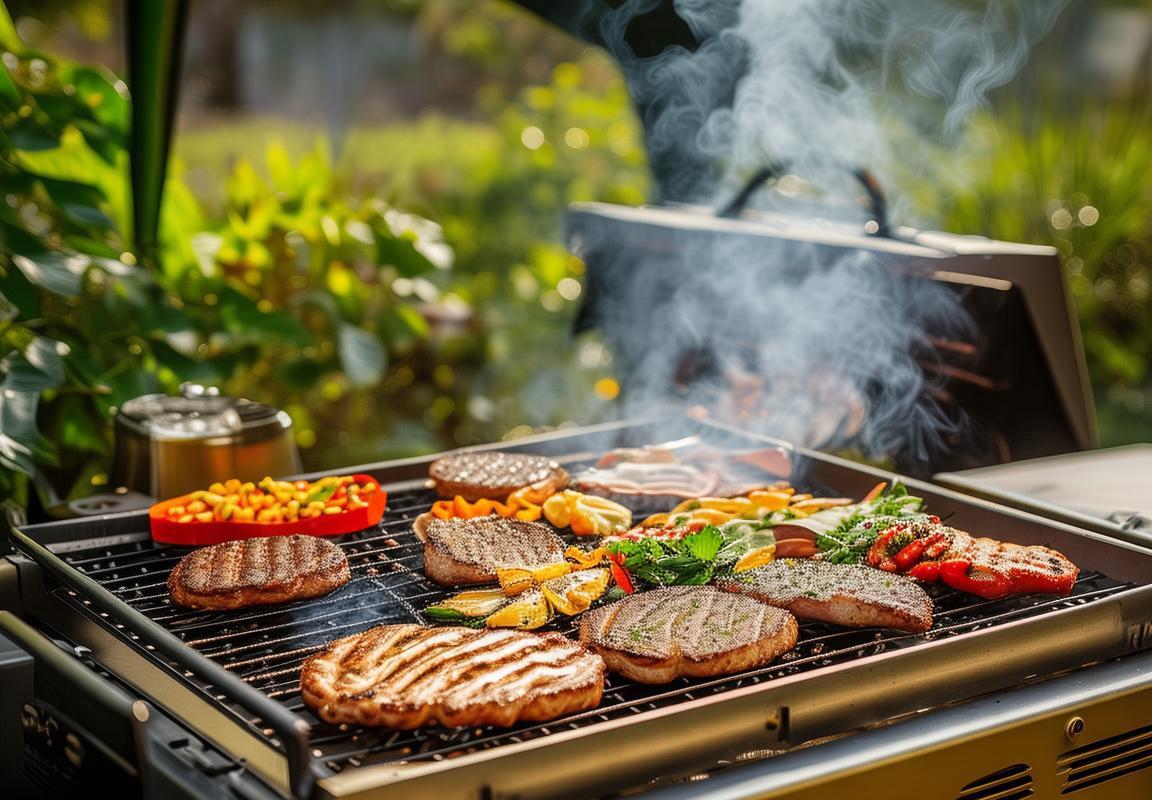
Understanding the Smokeless Grill Concept
The smokeless grill has emerged as a revolutionary concept in the world of outdoor cooking, blending the traditional joy of grilling with modern convenience and environmental consciousness. At its core, the smokeless grill is designed to mimic the authentic flavor of smoked food without the smoke. This is achieved through innovative technology that captures and redirects the smoke produced during the cooking process.
These grills utilize a smoke separator, often a water-filled tray or a special filter, to trap the smoke particles. As the food cooks, the smoke is channeled back into the cooking chamber, where it envelops the food in a flavorful mist. This method ensures that the smoke does not permeate the air, making it an attractive option for those concerned about outdoor air quality or indoor smoke.
One of the key advantages of smokeless grilling is its versatility. Whether you’re a fan of classic barbecue or a lover of international cuisines, smokeless grills can handle a wide range of cooking techniques. From searing steaks to slow-cooking ribs, these grills can deliver rich, smoky flavors without the hassle of managing a smoking fire.
The design of smokeless grills often reflects a commitment to efficiency and ease of use. Many models come with digital temperature controls, allowing cooks to maintain precise heat levels throughout the cooking process. This is particularly important when it comes to smoking meats, as maintaining a consistent temperature is crucial for achieving the perfect smoky flavor.
In terms of fuel source, smokeless grills can vary widely. Some models use wood chips or pellets to add that distinctive smokiness, while others use electricity or gas to power the grill and the smoke generation system. This variety means that there’s a smokeless grill to suit every lifestyle and preference.
The health benefits of smokeless grilling cannot be overlooked. Traditional grilling can lead to the formation of harmful compounds like polycyclic aromatic hydrocarbons (PAHs) and heterocyclic amines (HCAs) due to direct flame contact with the food. Smokeless grills reduce the risk of these compounds by minimizing the amount of time food is exposed to high heat and open flames.
Another interesting aspect of the smokeless grill concept is its potential for customization. Users can control the intensity and duration of the smoke flavor by adjusting the amount of wood chips or pellets used and the length of time the grill is smoking. This level of control allows for experimentation and the creation of unique smoky flavors.
The environmental impact of traditional smoking is also a significant consideration. Smokeless grills address this by eliminating the need for large amounts of wood or charcoal, which can contribute to deforestation and air pollution. By using smaller quantities of wood or alternative fuels, these grills promote a more sustainable approach to outdoor cooking.
From a practical standpoint, smokeless grills are also easier to clean than traditional smokers. Since the smoke is contained within the grill, there’s less mess and fewer lingering odors. This makes them a convenient choice for those who enjoy grilling but don’t want to deal with the cleanup associated with smoking.
The rise of smokeless grills has been fueled by a growing awareness of health and environmental issues, as well as the desire for a more efficient and user-friendly grilling experience. As consumers seek out solutions that align with their values, smokeless grills are becoming a popular choice among outdoor cooking enthusiasts.
The smokeless grill concept has also been embraced by the culinary industry. Chefs and restaurants are incorporating these grills into their operations to offer patrons a new level of flavor and convenience. The ability to provide smoked dishes without the smoke can open up new possibilities for creative chefs looking to push the boundaries of traditional barbecue.
In conclusion, the smokeless grill is more than just a cooking device; it’s a concept that addresses a range of concerns, from health and environmental impact to the desire for convenient and customizable cooking experiences. As technology continues to evolve, it’s likely that we’ll see even more innovative smokeless grills hitting the market, making the joy of smoky flavors more accessible and sustainable for everyone.

Key Features and Technologies of Modern Smokeless Grills
Modern smokeless grills have revolutionized the way we enjoy outdoor cooking, offering a cleaner, healthier, and often more convenient alternative to traditional grilling methods. Here’s a closer look at the key features and technologies that define these innovative cooking devices.
The Heat Source: At the heart of every smokeless grill is an efficient heat source. Many models use ceramic briquettes or concentrated heat elements to generate the intense heat needed for grilling. These heat sources are designed to provide a consistent and even heat distribution, crucial for achieving that perfect sear on meats.
Advanced Cooking Chambers: Unlike traditional grills that rely on open flames and charcoal, smokeless grills often feature a sealed cooking chamber. This design minimizes smoke and prevents flare-ups, which can lead to burned food and a less enjoyable cooking experience. The chambers are typically made from high-quality materials that can withstand high temperatures and are easy to clean.
Smoke Absorption Technology: One of the standout features of smokeless grills is their ability to capture and neutralize smoke. These grills often come equipped with a special filter system that absorbs smoke particles, allowing for cleaner air and a more pleasant cooking environment. This technology is particularly beneficial for those who are sensitive to smoke or those looking to minimize smoke odors in outdoor spaces.
Digital Control Systems: Many modern smokeless grills incorporate digital control systems that allow users to precisely regulate the temperature. These systems often include digital displays, adjustable heat settings, and even timers, making it easier to maintain the ideal cooking temperature throughout the grilling process.
Removable Grates and Components: For ease of cleaning and maintenance, smokeless grills often feature removable grates and cooking surfaces. This design allows for quick and thorough cleaning, ensuring that your grill stays in top condition for longer. Some models also include a drip pan or fat collector, which helps to keep the grill’s interior cleaner and reduces the risk of flare-ups.
Versatility in Cooking Methods: While smokeless grills are primarily designed for grilling, many models offer versatility in cooking methods. Some include a sear zone that can reach very high temperatures, perfect for searing steaks or creating a charred crust on vegetables. Others may have a side burner or a warming rack, expanding the grill’s capabilities to include sautéing, boiling, or keeping food warm.
Safety Features: Safety is a top priority in modern smokeless grills. Many models include features like automatic shut-off in case of overheating, cool-touch handles, and non-slip feet to prevent accidents. These safety features give users peace of mind, especially when cooking with high heat.
Smart Connectivity: In the era of smart technology, some smokeless grills have taken it to the next level by offering connectivity options. Users can control their grill remotely via a smartphone app, receive temperature alerts, and even monitor the cooking process from the comfort of their home.
Efficiency and Eco-Friendly: Smokeless grills are not only cleaner but also more efficient than traditional grills. They use less fuel and produce less waste, making them a more eco-friendly choice for environmentally conscious consumers.
Innovative Materials: The materials used in modern smokeless grills are also worth noting. Many grills are constructed with durable, corrosion-resistant materials that are designed to last for years. The use of high-quality stainless steel, porcelain-coated surfaces, and other robust materials ensures that these grills can withstand the rigors of outdoor cooking.
The integration of these key features and technologies has transformed the smokeless grill into a must-have for outdoor cooking enthusiasts. Whether you’re a seasoned grill master or a novice looking to elevate your grilling game, the innovations in smokeless grills offer a cleaner, safer, and more versatile way to enjoy the flavors of grilled food.
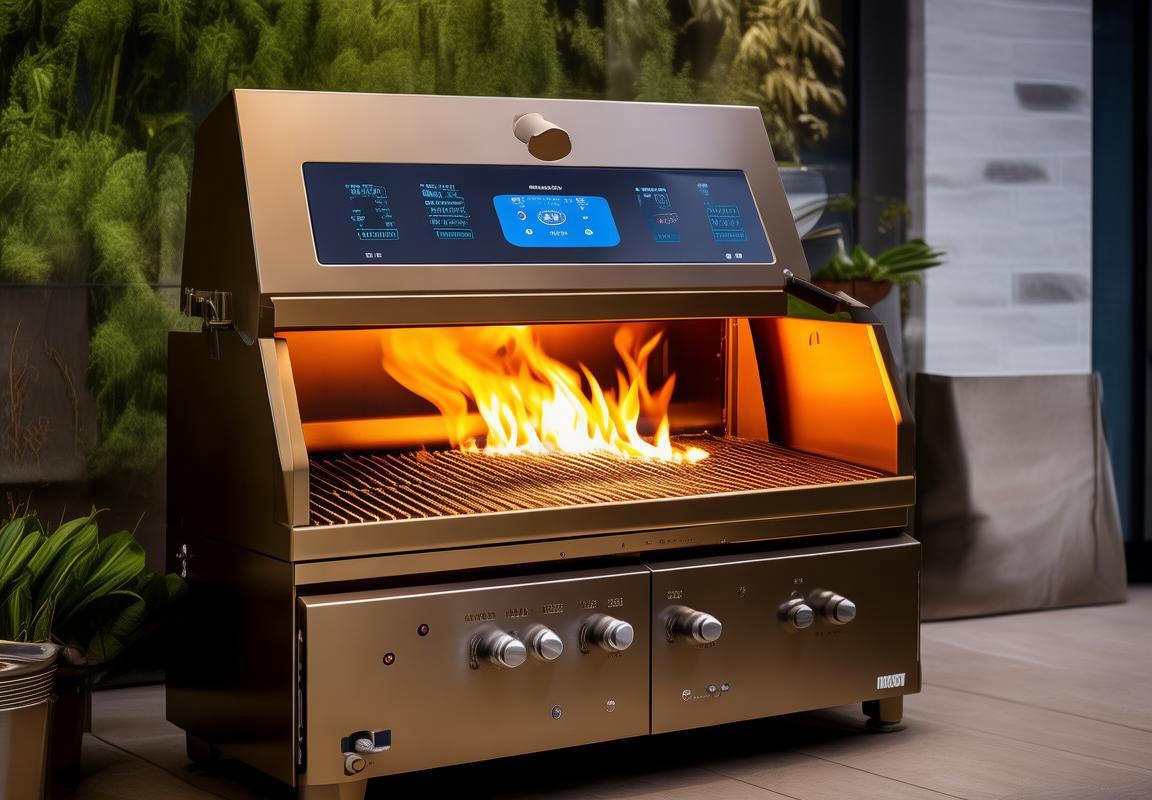
Consumer Benefits and Trends in Adoption
In recent years, the adoption of smokeless grills has surged, offering consumers a range of benefits that cater to both convenience and health-conscious lifestyles. This shift is not just a passing trend but a testament to the evolving demands of modern cooking enthusiasts.
The allure of smokeless grilling lies in its ability to eliminate the smoky aroma and residue often associated with traditional barbecue methods. This feature is particularly appealing to those who enjoy the taste of grilled foods but wish to avoid the lingering smoke in their homes or the need for extensive cleanup.
Health-conscious consumers are also drawn to smokeless grills. By reducing smoke and its harmful particles, these grills help minimize the risk of respiratory issues and indoor air pollution. The clean cooking environment is a significant draw for families and individuals looking to maintain a healthier indoor air quality.
Ease of use is another major benefit. Smokeless grills often come with intuitive controls and settings, making them accessible to both beginners and seasoned grillers. The absence of smoke means that food can be grilled at a wider range of temperatures, allowing for greater control over the cooking process and the final flavor profile.
One of the most notable trends in smokeless grill adoption is the preference for portability. Many consumers are opting for compact, portable models that can be easily transported to tailgating events, camping trips, or even for grilling in small urban spaces. This flexibility has opened up new opportunities for outdoor cooking enthusiasts to enjoy their favorite grilled dishes in a variety of settings.
The convenience factor is undeniable. Smokeless grills often come with features like temperature control, which allows users to maintain a consistent heat throughout the cooking process. This means less guesswork and more consistent results, which is a significant advantage for those who value their time and the quality of their meals.
In terms of cost, smokeless grills have become increasingly affordable, making them a viable option for a broader market. This accessibility has played a crucial role in their rise in popularity, as more people can now experience the benefits of smokeless grilling without a significant financial investment.
The integration of smart technology is also a trend that has influenced the adoption of smokeless grills. Many modern models are equipped with Bluetooth connectivity, allowing users to control the grill remotely through their smartphones. This feature not only adds a touch of modern convenience but also ensures that the grill is ready to go when the user is.
Additionally, the variety of cooking options that smokeless grills offer has expanded. From direct grilling to smoking and even baking, these appliances can perform multiple functions, making them versatile additions to any kitchen. This versatility is a major appeal for consumers who are looking for a single appliance that can handle various cooking styles.
Another aspect that has contributed to the trend in smokeless grill adoption is the emphasis on sustainability. As more people become environmentally conscious, the reduced emissions and waste from smokeless grilling are seen as positive contributions to a greener lifestyle.
The rise of smokeless grills is not just a trend; it’s a reflection of the changing values and priorities of consumers. The combination of health benefits, convenience, cost-effectiveness, and technological advancements has created a perfect storm for the growth of this segment in the European and American markets. As the demand continues to grow, we can expect to see even more innovative features and designs that cater to the evolving needs of the modern grill enthusiast.
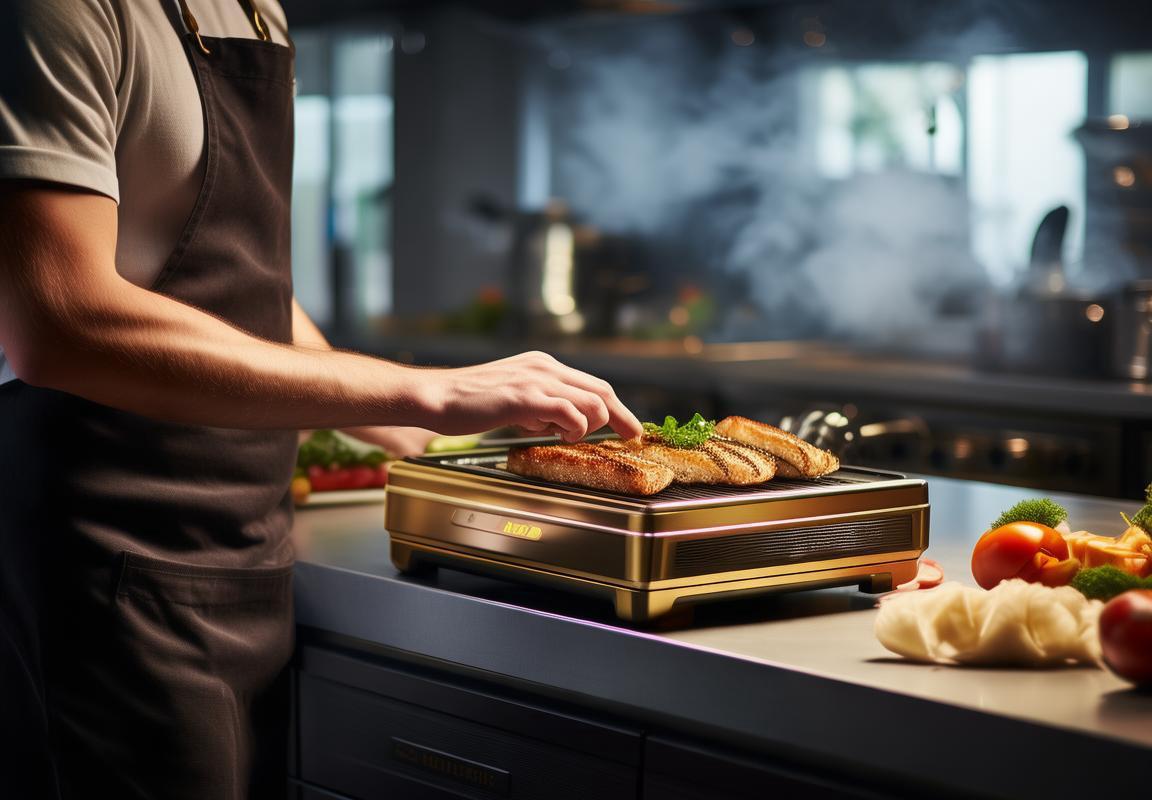
Market Dynamics: Drivers and Challenges
The European and American markets for smokeless grills have been experiencing a dynamic shift, fueled by a variety of factors that are reshaping the landscape of outdoor cooking. These drivers and challenges play a crucial role in the market’s growth and the future of smokeless grills.
Increased Health AwarenessThe surge in health consciousness among consumers has been a significant driver for the smokeless grill market. With a growing concern over the health risks associated with traditional grilling methods, such as the formation of harmful chemicals like heterocyclic amines (HCAs) and polycyclic aromatic hydrocarbons (PAHs), smokeless grills offer a healthier alternative. The reduction of smoke and smoke-related compounds appeals to those looking to minimize potential carcinogens in their diet.
Eco-Friendly AppealAs environmental concerns escalate, the eco-friendly aspect of smokeless grills has become a notable draw. These grills produce minimal smoke and often use cleaner burning fuels, such as propane or natural gas, which are less harmful to the atmosphere compared to charcoal or wood. This green advantage resonates with consumers who are environmentally conscious and looking to reduce their carbon footprint.
Technological AdvancementsThe continuous development of technology has been a major force behind the growth of the smokeless grill market. Innovations like digital controls, infrared heating, and advanced smoke reduction systems have made modern smokeless grills more efficient and user-friendly. These technological upgrades have not only improved the grilling experience but have also expanded the appeal to a broader audience.
Urbanization and Limited Outdoor SpaceThe trend of urbanization and the limited availability of outdoor spaces in cities have led to a demand for compact, efficient cooking solutions. Smokeless grills, with their smaller footprint and ease of use, are perfectly suited for balconies, patios, and even rooftop gardens. This shift in lifestyle preferences has opened up new markets and opportunities for the smokeless grill industry.
Cultural Shifts in GrillingThere’s been a noticeable cultural shift towards outdoor cooking, as more people seek to enjoy meals outside of traditional dining settings. The smokeless grill’s versatility in cooking a variety of foods, from meats to vegetables, has contributed to this trend. The ability to grill without the hassle of smoke and cleanup has made it a popular choice for casual gatherings and backyard parties.
Competition from Traditional Grilling MethodsDespite the growth of the smokeless grill market, it’s not without its challenges. The established popularity of traditional grilling methods, such as charcoal and wood-burning grills, poses a significant competitive threat. The scent and flavor profile of wood-smoked food are hard to replicate, and some grill enthusiasts remain loyal to the traditional methods, despite the health and environmental benefits of smokeless grills.
Regulatory HurdlesRegulatory standards and fire codes can also present challenges. In some areas, the use of certain types of smokeless grills may be restricted due to local regulations, particularly in urban settings. Ensuring that smokeless grills meet or exceed these standards can be a hurdle for manufacturers and distributors.
Pricing and AccessibilityThe cost of smokeless grills can vary widely, from budget-friendly models to premium, high-tech units. While the market offers something for every budget, the higher-end models may deter some consumers who are not looking to invest a significant amount in a grill. Additionally, the accessibility of these grills in various regions can be inconsistent, which can limit market penetration.
Brand Perception and EducationBranding and consumer education are critical in the smokeless grill market. Many consumers are not yet fully aware of the benefits that smokeless grills offer over traditional methods. Brands that can effectively communicate the advantages and ease of use may have a competitive edge. Conversely, the perception of smokeless grills as less authentic or less flavorful can be a challenge for manufacturers to overcome.
Innovation and Continuous ImprovementThe need for innovation remains constant as the smokeless grill market evolves. Continuous improvement in design, functionality, and user experience is essential to keep pace with changing consumer demands and to stay competitive. Manufacturers that can innovate and adapt to new trends, such as the integration of smart technology or the use of alternative fuels, will likely lead the market.
Market Expansion OpportunitiesThe smokeless grill market is ripe for expansion into new segments, such as the commercial sector. As restaurants and catering services look for more efficient and healthier cooking options, smokeless grills could become a popular choice. This expansion could open up new revenue streams and growth opportunities for manufacturers.
The dynamic market for smokeless grills in the European and American markets is shaped by a combination of health, environmental, and technological drivers. However, it is also confronted with challenges related to competition, regulations, pricing, and consumer perception. Navigating these complexities while focusing on innovation and education will be key to the continued growth and success of the smokeless grill industry.
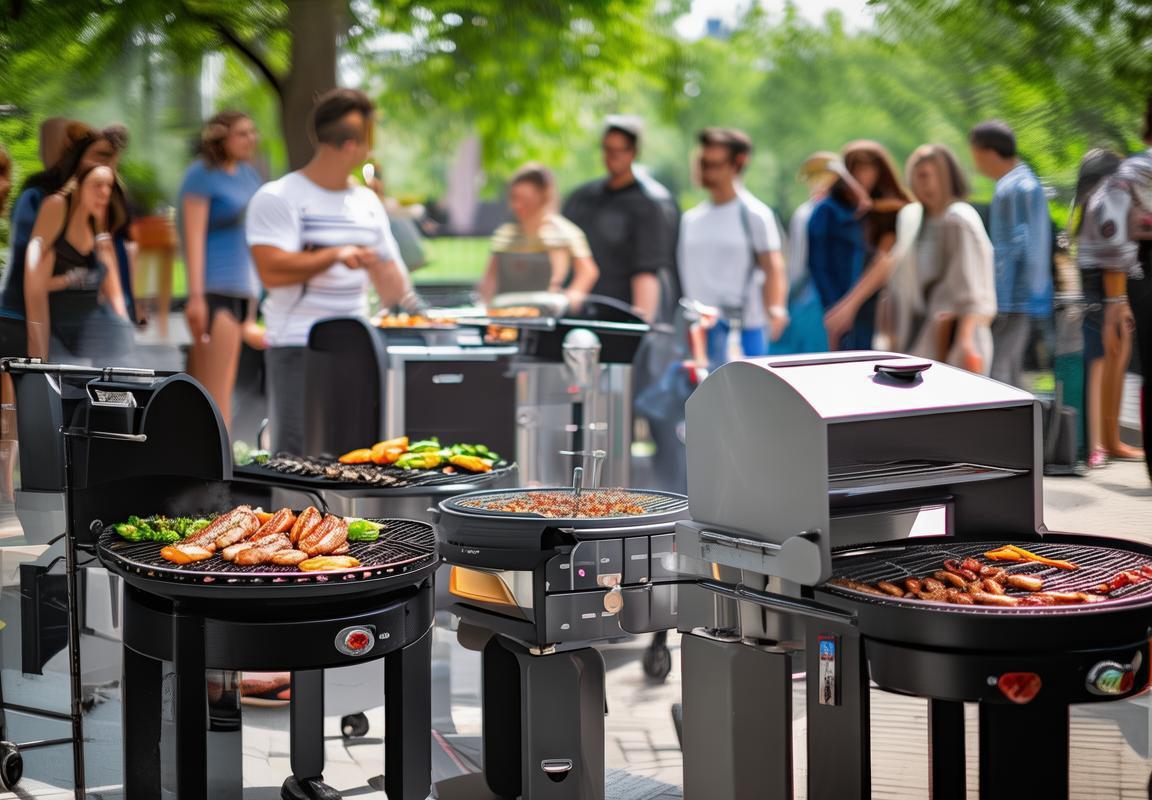
Competitive Landscape: Top Brands and Innovations
In the competitive landscape of smokeless grill manufacturers, several brands have emerged as leaders, each bringing unique innovations to the market. From sleek designs to advanced technologies, these brands are not just meeting consumer demands but also shaping the future of outdoor cooking.
One such brand that has gained significant traction is Char-Broil. Known for their reliable and versatile grills, Char-Broil has introduced a range of smokeless grills that cater to different cooking styles. Their innovation lies in the use of ceramic heat diffusers, which help in distributing heat evenly and reducing smoke production.
Another major player in the smokeless grill market is Traeger. With their roots in wood pellet grilling, Traeger has expanded their portfolio to include smokeless options. Their technology involves using a combination of convection and radiant heat to minimize smoke while offering the unique flavor of wood-fired cooking.
George Foreman, a name synonymous with grilling, has also ventured into the smokeless grill space. Their grills are known for their flat-top design, which not only reduces smoke but also allows for even cooking. The brand’s commitment to health and convenience has made their smokeless grills a popular choice among health-conscious consumers.
Cuisinart, a well-established kitchen appliance brand, has also joined the smokeless grill market. Their grills are characterized by their easy-to-use features and sleek designs. Cuisinart’s innovation lies in their digital control panels and automatic shut-off functions, providing users with both control and safety.
Green Mountain Grills stands out with their use of convection technology in their smokeless grills. This method of cooking ensures that food is cooked quickly and evenly, with minimal smoke. The brand’s commitment to sustainability is evident in their use of eco-friendly materials and energy-efficient designs.
Kamado Joe, while primarily known for their kamado-style grills, has also introduced a line of smokeless options. Their innovative designs incorporate airtight lids and controlled heat distribution, allowing for slow and low smoking, as well as high-heat grilling. The brand’s focus on creating a versatile cooking experience has made their smokeless grills a favorite among grill enthusiasts.
Breville, a brand known for its high-quality kitchen appliances, has also entered the smokeless grill market. Their grills are praised for their precision cooking and durable construction. Breville’s use of advanced heat management systems ensures that smokeless grilling is achieved with exceptional results.
In the world of smokeless grills, innovation is not just about the technology used but also about how it enhances the overall cooking experience. Brands like Webber and Pit Boss have introduced grills with built-in thermometers and temperature control systems, making it easier for users to achieve perfect cooking temperatures every time.
As the market continues to evolve, we see a trend towards smart technology integration. Brands like Napoleon have developed smokeless grills that can be controlled via smartphone apps, allowing users to monitor and adjust cooking temperatures remotely. This level of connectivity and convenience is changing the way people approach outdoor cooking.
In conclusion, the competitive landscape of smokeless grills is shaped by a mix of well-established brands and new entrants, each bringing their own unique take on the smokeless grilling experience. From advanced heat distribution systems to smart technology integration, these brands are pushing the boundaries of what’s possible in the world of outdoor cooking.
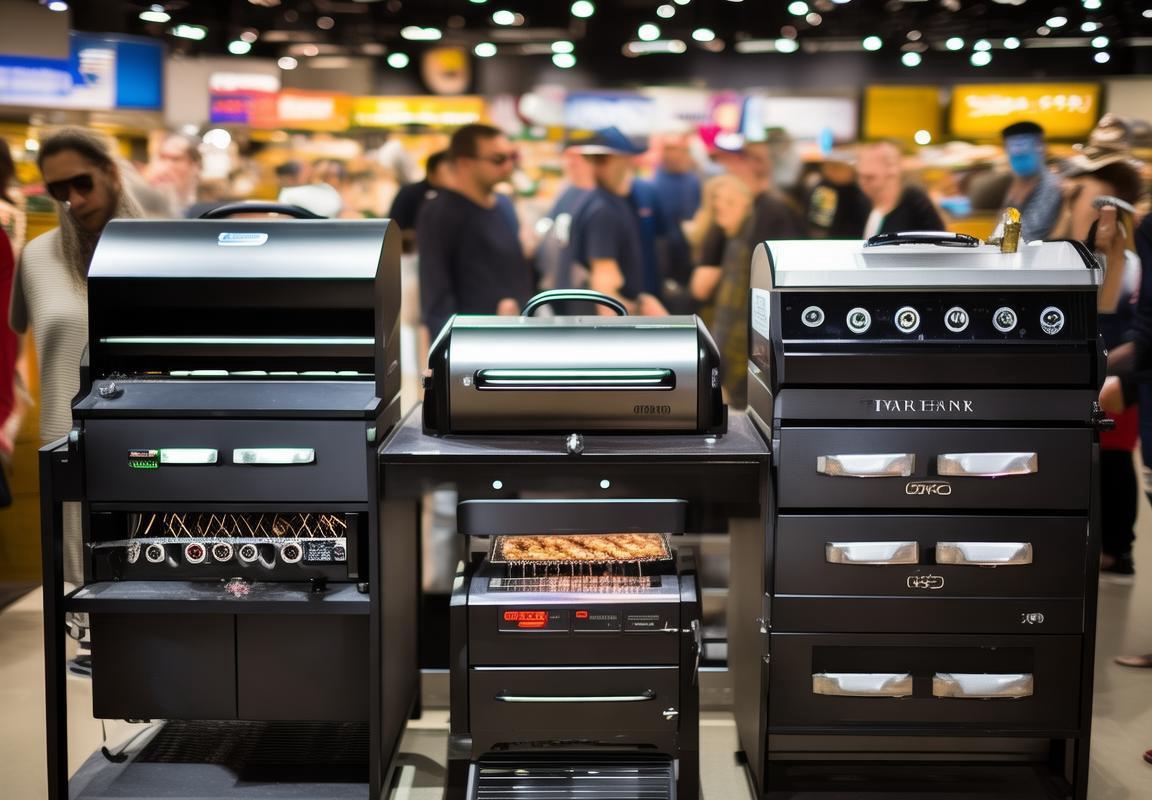
Impact on Traditional Barbecue and Outdoor Cooking
The shift towards smokeless grills has sparked a significant transformation in the traditional barbecue and outdoor cooking landscape. Here’s how it’s reshaping the way we enjoy these culinary experiences:
Grillsmoke, a byproduct of traditional barbecue, has long been a staple of outdoor cooking. However, the rise of smokeless grills has introduced a cleaner alternative that’s gaining popularity. This change is not just about the absence of smoke but also about the evolution of flavor profiles and cooking techniques.
As smokeless grills become more prevalent, traditional barbecue enthusiasts are rethinking their methods. The cleaner burn of smokeless grills allows for a purer taste, which some argue enhances the flavor of meats and vegetables. This shift is prompting chefs and home cooks alike to experiment with new recipes and cooking times.
The convenience factor of smokeless grills cannot be overstated. With less cleanup and a reduced need for charcoal or wood chips, these grills offer a hassle-free experience. This convenience is particularly appealing to busy families and individuals who want to enjoy barbecue without the time-consuming preparation and cleanup associated with traditional grilling.
The environmental impact of traditional barbecue has long been a concern. The smoke produced by burning charcoal or wood contributes to air pollution and can be harmful to health. Smokeless grills, on the other hand, are designed to minimize emissions, making them a more eco-friendly choice. This environmental appeal is attracting environmentally conscious consumers who are willing to trade the traditional barbecue experience for a greener alternative.
The social aspect of barbecue is a significant part of the outdoor cooking culture. While smokeless grills may not alter the fundamental social dynamics of these gatherings, they do offer a more inclusive experience. People with allergies or sensitivities to smoke can now participate in barbecue events without discomfort, broadening the circle of those who can enjoy the outdoor cooking experience.
The integration of technology into smokeless grills has also had an impact on traditional barbecue. Smart grills with temperature control and precise cooking times are becoming more common, which can be seen as a modern twist on the classic barbecue. This technological advancement is encouraging a new generation of grillers to embrace outdoor cooking, even if they’re not as familiar with the traditional methods.
The rise of smokeless grills has also sparked a wave of innovation in barbecue accessories and tools. From specialized grill covers that protect against smoke to new types of grill gloves designed for handling hot surfaces, the market is responding to the changing needs of barbecue enthusiasts. This innovation is not only enhancing the smokeless grill experience but also enriching the traditional barbecue scene.
Despite the growing popularity of smokeless grills, traditional barbecue still holds a special place in many hearts. The cultural and historical significance of barbecue is deeply rooted in many communities, and the sensory experience of watching flames and feeling the heat of a smoldering grill is something that smokeless grills can’t replicate.
The impact of smokeless grills on traditional barbecue and outdoor cooking is a blend of innovation and tradition. While they offer a cleaner, more convenient alternative, they also encourage a deeper appreciation for the culinary arts and the social aspects of outdoor cooking. Whether you’re a purist who enjoys the authentic barbecue experience or a modern cook looking for an eco-friendly option, the landscape of outdoor cooking is evolving, and smokeless grills are a key player in this dynamic shift.

Future Outlook: Predictions and Emerging Trends
The smokeless grill market has been on a steady rise, reshaping the way we approach outdoor cooking. As the demand for healthier and more convenient cooking options grows, the impact on traditional barbecue and outdoor cooking is profound. Here’s a closer look at how these modern cooking methods are influencing the traditional landscape.
Traditional barbecue, with its rich history and cultural significance, has long been a cornerstone of outdoor cooking. However, the rise of smokeless grills is prompting a shift in preferences. These grills, designed to minimize or eliminate smoke, offer a cleaner, more controlled cooking environment. The result? A growing number of consumers are opting for smokeless grills over traditional charcoal or wood-burning barbecues.
One key factor is the health aspect. Smokeless grills reduce the amount of smoke and particulate matter that can be harmful when inhaled. For those with respiratory conditions or allergies, this is a significant draw. Additionally, the cleaner burn of smokeless grills often leads to less charred food, which can decrease the formation of carcinogens.
The convenience factor cannot be overlooked either. Smokeless grills are often easier to clean and maintain compared to traditional barbecues. With fewer parts and simpler designs, they appeal to busy households or those who prefer a quick and easy cooking experience. This convenience is particularly attractive in urban settings where space and time are at a premium.
Despite the allure of smokeless grills, traditional barbecue still holds a special place in many hearts. The unique flavors and aromas that come from smoking meats over an open flame are hard to replicate. As a result, the two methods are beginning to coexist, with consumers enjoying the best of both worlds.
Some are embracing hybrid grilling techniques, using smokeless grills for the initial cooking process and then finishing the dish on a traditional grill to add that distinctive smoky flavor. Others are simply enjoying the flexibility that smokeless grills offer, using them for everyday cooking while reserving traditional barbecues for special occasions or when they want to indulge in that classic barbecue experience.
Outdoor cooking, once a seasonal pastime, is now becoming a year-round activity. The convenience and efficiency of smokeless grills have expanded the outdoor cooking season, allowing enthusiasts to enjoy their favorite meals regardless of the weather. This shift has also had a positive impact on the availability of outdoor cooking accessories and appliances, as consumers look for ways to enhance their smokeless grilling experiences.
As the popularity of smokeless grills continues to grow, there are challenges that the industry must address. For one, the cost of these grills can be higher than traditional models, which may limit their accessibility to some consumers. Additionally, the initial learning curve for using smokeless grills can be steep, as they often require a different approach to cooking than what many are accustomed to.
Brands are responding by offering more user-friendly models, complete with detailed instructions and even interactive cooking guides. They are also exploring new technologies to make smokeless grilling more accessible and enjoyable. One such innovation is the integration of smart features, allowing users to monitor and control their grills remotely through their smartphones.
Looking ahead, the future of outdoor cooking appears to be one of fusion and innovation. While traditional barbecue will likely always have its dedicated followers, smokeless grills are poised to become a staple in many homes. The key will be in finding ways to blend the best of both worlds, offering the convenience and efficiency of smokeless grills while preserving the unique flavors and experiences that traditional barbecue provides.
The rise of smokeless grills is not just a trend; it’s a testament to the evolving nature of outdoor cooking. As technology continues to advance, we can expect to see even more innovative solutions that cater to a wide range of tastes and preferences. Whether it’s the purist who enjoys the authentic smoky taste of a traditional barbecue or the busy professional looking for a quick, healthy meal, the future of outdoor cooking is sure to be diverse and exciting.
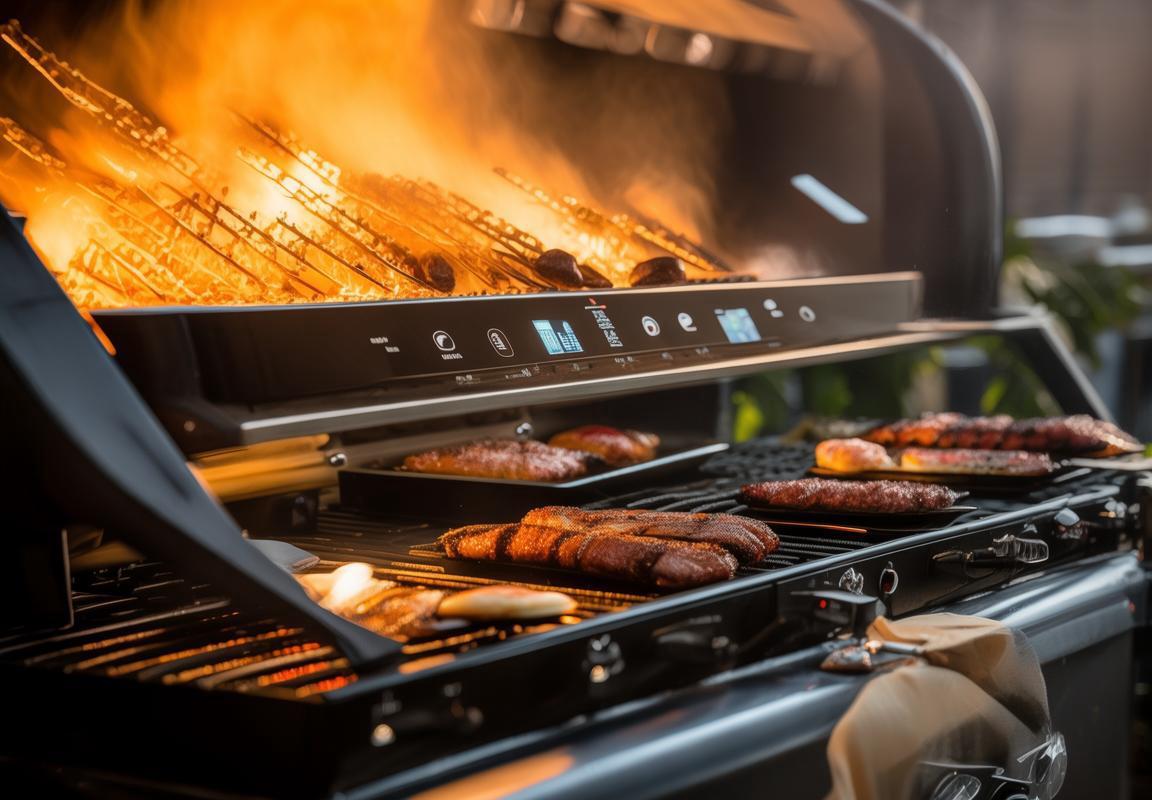
Case Studies: Success Stories and User Experiences
In the world of smokeless grills, there are numerous success stories and user experiences that highlight the transformative impact of these innovative cooking devices. From seasoned grillers to newcomers to the art of outdoor cooking, these anecdotes offer a glimpse into the benefits and challenges of embracing the smokeless grill revolution.
One such story comes from a family who had always been passionate about traditional barbecue. They had a well-equipped outdoor kitchen, but the smoke and cleanup were always a hassle. After purchasing a smokeless grill, they found that the taste was just as rich, but the experience was cleaner and more convenient. The family now enjoys gathering with friends and family without the worry of lingering smoke or the need for extensive cleanup.
Another user, a professional chef, was skeptical about the quality of food that could be produced on a smokeless grill. However, after experimenting with various recipes and techniques, he was amazed by the versatility and control the grill offered. He now incorporates smokeless grilling into his catering services, providing a unique and healthier option for his clients.
One common thread among these success stories is the reduction in smoke and the elimination of ash, which simplifies the grilling process. Users report that the food retains more moisture, resulting in juicier meats and vegetables. This change has also led to a more pleasant outdoor experience, as the absence of smoke allows for comfortable cooking in enclosed spaces or during the warmer months.
On the flip side, there are challenges that users have encountered. Some have expressed concerns about the initial cost of smokeless grills, which can be higher than traditional charcoal or gas grills. Additionally, the learning curve for some users has been steep, as they had to adapt their grilling techniques to the new technology.
In one instance, a seasoned grill master found that the even heat distribution of a smokeless grill required a different approach to cooking. He initially struggled with achieving the perfect sear on his steaks, but with practice and some trial and error, he developed new methods that worked beautifully with the grill’s capabilities.
Another challenge has been the availability of smokeless grill accessories and recipes. While the market has seen an increase in both, some users have noted that the selection is not as vast as that for traditional grilling. This has led to a bit of a “niche” market for smokeless grill enthusiasts, who often share tips and recipes through online forums and social media.
Despite these challenges, the overall sentiment from users is overwhelmingly positive. The convenience, health benefits, and the ability to enjoy outdoor cooking without the drawbacks of traditional grilling have made smokeless grills a hit with many.
One user shared her experience of hosting a large outdoor party with a smokeless grill. She mentioned that the lack of smoke allowed her to cook for hours without the need for constant ventilation or the risk of setting off smoke alarms. The guests were equally impressed by the flavor and quality of the food, and the party was a resounding success.
Another user, who had previously struggled with outdoor allergies, found that the smokeless grill was a game-changer. The absence of smoke meant she could enjoy the outdoors without the discomfort and irritation that came with traditional grilling.
These success stories and user experiences paint a picture of a growing trend in the outdoor cooking market. As more people discover the benefits of smokeless grills, the demand for these products is likely to increase. The future of outdoor cooking may well see a blend of traditional methods and the innovation of smokeless grilling, offering a healthier, more convenient, and enjoyable experience for all.
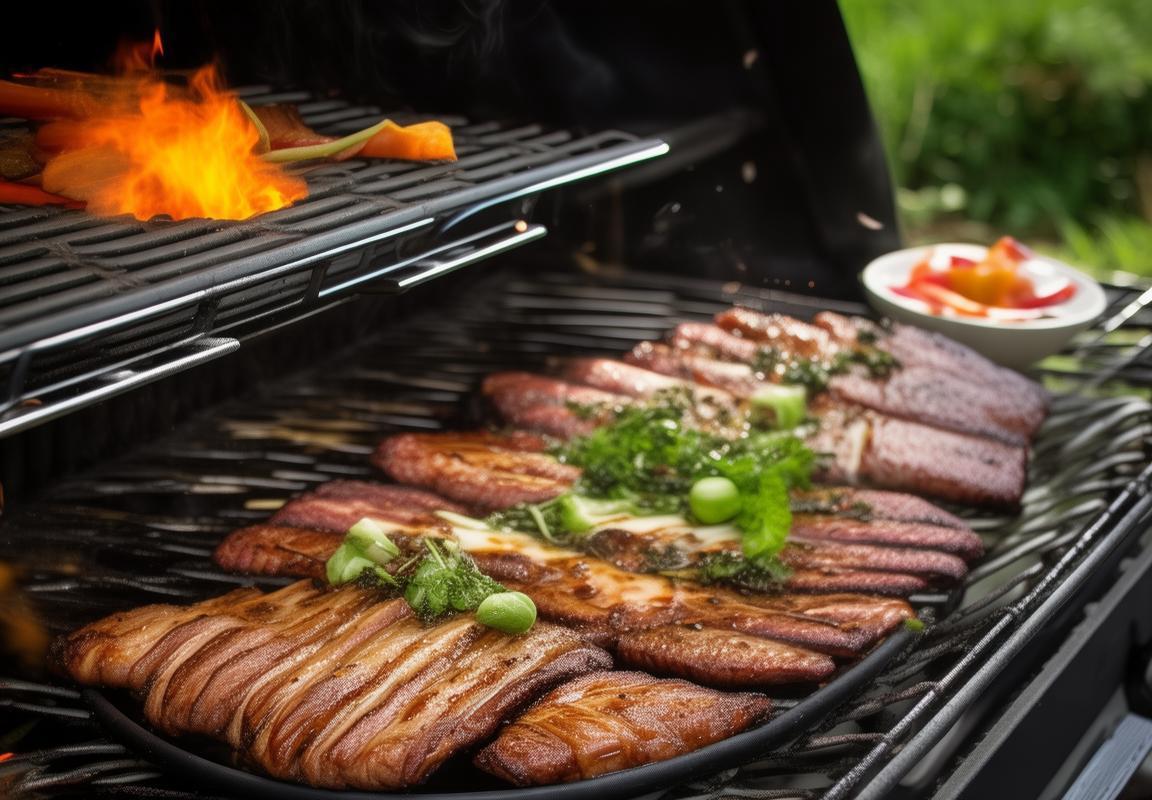
Conclusion: The Smokeless Grill’s Place in Modern Cooking Culture
The smokeless grill has emerged as a significant player in the modern cooking culture, reshaping the way we approach outdoor cooking. Its unique blend of convenience, health benefits, and environmental consciousness has not only captured the interest of consumers but has also sparked a wave of innovation within the industry. Here, we delve into the smokeless grill’s evolving role in our culinary landscape.
As the smokeless grill continues to gain popularity, it has started to redefine the traditional barbecue experience. The allure of outdoor cooking remains, but the smokeless aspect has opened up new possibilities for those who prefer a cleaner, more controlled cooking environment. The reduction in smoke not only makes the cooking area more pleasant but also eliminates the need for constant monitoring, allowing for a more relaxed and enjoyable cooking experience.
The integration of advanced technologies in smokeless grills has also played a pivotal role in their rise. Features like digital temperature control, integrated smoking capabilities, and smart connectivity have made these appliances more versatile and user-friendly. These innovations have not only expanded the grill’s functionality but have also appealed to a broader audience, including those who may not have been as inclined to invest in traditional barbecue setups.
The smokeless grill’s health benefits have been a major draw for consumers. With concerns over air quality and the potential health risks associated with smoke, the smokeless option has become increasingly attractive. It’s not just about avoiding the smoke; it’s also about the ability to cook healthier meals. The reduced smoke means less reliance on charred or burned foods, which can be higher in harmful compounds.
In terms of environmental impact, the smokeless grill stands out as a more sustainable choice. The reduction in smoke emissions means less pollution and a smaller carbon footprint. This eco-friendly aspect has resonated with environmentally conscious consumers, adding another layer to the grill’s appeal.
The competitive landscape of the smokeless grill market is diverse, with several top brands leading the charge. Companies like Traeger, Char-Broil, and Green Mountain Grills have established themselves as industry leaders, offering a range of smokeless grills that cater to different needs and preferences. Each brand brings its own innovations, from unique smoking techniques to sleek designs, making the market dynamic and ever-evolving.
While the smokeless grill has gained a strong foothold in the market, it hasn’t completely replaced traditional barbecue methods. The cultural significance of barbecue, with its rich history and communal aspects, remains a cornerstone of outdoor cooking. However, the smokeless grill has become a complementary tool, allowing enthusiasts to enjoy the best of both worlds—cleaner cooking and the traditional barbecue experience.
The future of the smokeless grill in modern cooking culture looks promising. As technology continues to advance, we can expect even more innovative features and improved performance. The integration of AI and IoT (Internet of Things) could lead to smart grills that can predict cooking times and temperatures, making the grilling process even more intuitive. Additionally, the development of new materials and cooking surfaces could further enhance the flavor and texture of smoked foods.
The adoption of smokeless grills is on the rise, and with good reason. They offer a convenient, healthy, and eco-friendly alternative to traditional grilling methods. As more people become aware of these benefits, the smokeless grill is likely to become an integral part of modern cooking culture. It’s not just a trend; it’s a shift in how we think about outdoor cooking and the role it plays in our lives.
In conclusion, the smokeless grill has carved out a unique niche in modern cooking culture. Its ability to offer a cleaner, healthier, and more sustainable cooking experience has resonated with consumers across the globe. As the market continues to grow and evolve, the smokeless grill is poised to become an even more integral part of our culinary landscape, blending tradition with innovation and convenience.